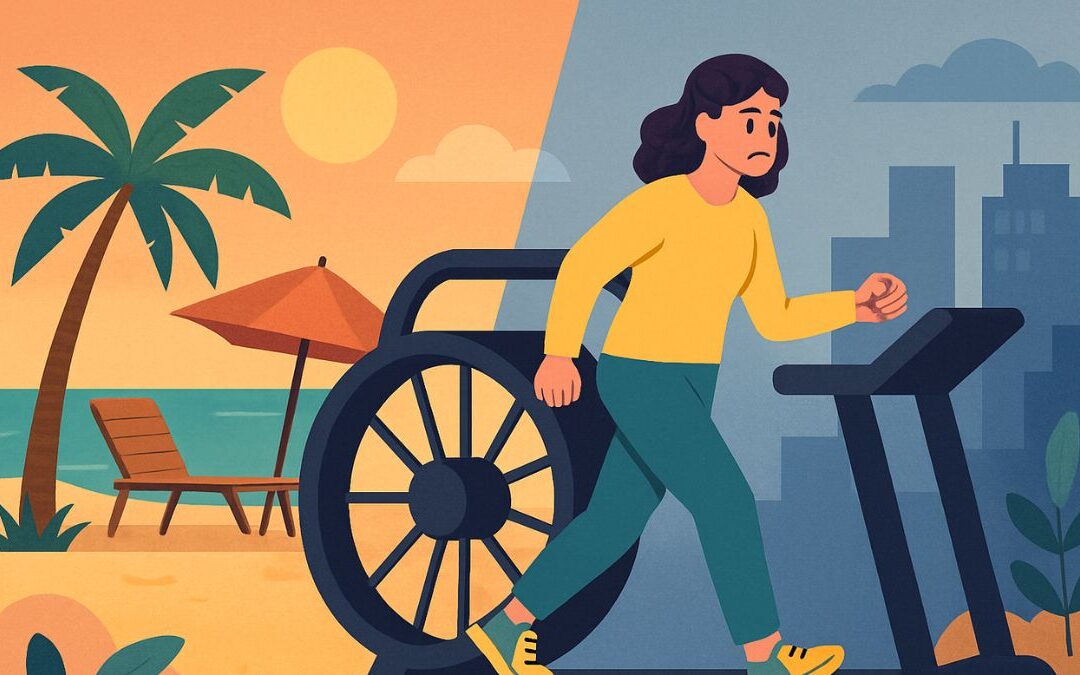How to Approach This Lesson
Welcome! Today we’re putting on our technical writer hats. Our goal is to create a how-to guide that is crystal clear, easy to follow, and genuinely helpful. The topic is setting up a home podcast studio. The best way to tackle this lesson is to imagine you know absolutely nothing about the topic. As we build the guide, constantly ask: “Is this simple enough? Is the next step obvious?” This mindset is key to creating instructional content that works, a valuable skill tested in many professional and academic English exams.
The Challenge and The Plan
The challenge in writing a how-to guide is clarity and logical order. We need to take a process that might seem complicated and break it down into small, manageable, and sequential steps. We can’t assume the reader has any prior knowledge. We need to define terms, explain the “why” behind each step, and guide them from zero to “ready to record.”
The language must be direct, concise, and encouraging. We’re aiming to be a helpful expert, not a dense technical manual.
Here’s our plan to create an excellent how-to guide:
- Outline the Process: We’ll break down the entire process of setting up a studio into logical, high-level stages (e.g., Gear, Environment, Setup, Recording).
- Flesh out the Steps: Within each stage, we will define the specific, actionable steps a beginner needs to take. We’ll use imperative verbs (e.g., “Choose,” “Connect,” “Install”) to make the instructions direct.
- Add Explanations and Pro-Tips: We won’t just say what to do, but why it’s important. We’ll also sprinkle in some “pro-tips” to add extra value and show expertise.
- Draft with Clarity: We’ll write the guide using simple language, short sentences, headings, and bullet points to make the information easy to scan and digest. Then we’ll polish it for flow and tone.
Let’s start building our guide.
Step-by-Step Walkthrough: Crafting the How-To Guide
Step 1: Outline the Process
A logical flow is everything. Here’s a simple, four-part structure:
- Part 1: The Essential Gear: What you absolutely need to buy.
- Part 2: Prepare Your Space: How to make your room sound good.
- Part 3: Connect Everything: A step-by-step guide to plugging it all in.
- Part 4: First Recording Test: How to make sure it’s all working.
This structure takes the reader from shopping, to preparation, to assembly, to testing. It’s a natural and easy-to-follow progression.
Step 2: Flesh out the Steps
Now let’s add the specific, actionable steps within each part.
- Part 1: Gear -> Choose a microphone, select headphones, pick an audio interface.
- Part 2: Space -> Choose a quiet room, reduce echo (soft furnishings), minimize background noise.
- Part 3: Connect -> Plug mic into interface, interface into computer, headphones into interface.
- Part 4: Test -> Install software, select input/output, do a test recording.
Step 3: Add Explanations and Pro-Tips
This is where we add the value.
- When we say “Choose a USB microphone,” we’ll explain why: “This is the easiest option for beginners as it plugs directly into your computer without needing extra equipment.”
- When we talk about reducing echo, we’ll add a Pro-Tip: “You don’t need expensive foam! Recording in a closet full of clothes is a free and surprisingly effective way to get great sound.”
- For the test recording, we’ll tell them what to listen for: “Listen for ‘plosives’ (puffy sounds on ‘P’ and ‘B’ words) and background hum.”
Step 4: Draft with Clarity and Polish
Now, let’s put it all together.
Bad Example (Confusing and Vague):
To make a podcast, you need a microphone. Plug it in. Also, the room should be quiet. Use software to record yourself. Make sure it sounds good.
This is useless. It’s not a guide; it’s a list of vague statements.
First Draft (Using our structure):
How to Set Up a Podcast Studio
1. Get Gear
You need a USB mic, headphones, and a pop filter.
2. Prepare Room
Make it quiet. Use blankets to stop echo.
3. Connect
Plug the mic into the computer.
4. Record
Install Audacity. Record and listen.
This is better—it’s structured. But it’s still too brief and doesn’t explain anything. It lacks a friendly, guiding tone. Let’s expand and polish it into a comprehensive, helpful guide.
Final Polished Version:
How to Set Up Your First Podcast Studio: A Beginner’s Guide
So, you’re ready to share your voice with the world? Fantastic! Setting up a home studio might sound intimidating and expensive, but it doesn’t have to be. This guide will walk you through everything you need to go from zero to recording your first episode with clear, professional-sounding audio.
Part 1: Gather Your Essential Gear
You can spend a fortune on audio equipment, but to start, you only need three key things.
- Your Microphone: This is your most important piece of gear. For simplicity and quality, start with a USB Microphone.
* Why a USB Mic? It plugs directly into your computer and has its own audio conversion built-in, making it the ultimate plug-and-play option for beginners. (Popular choices: Blue Yeti, Audio-Technica AT2020 USB+).
- Your Headphones: You need “closed-back” headphones. These prevent the sound from your headphones from “bleeding” into your microphone while you record.
* Pro-Tip: Avoid using Bluetooth headphones for recording, as they can have a slight delay (latency) that will be distracting. A simple, wired pair is best.
- A Pop Filter: This is a small foam or mesh screen that clips onto your mic. It’s essential for softening the harsh “p” and “b” sounds (known as plosives) that can create a distracting popping noise in your recording. Don’t skip this!
Part 2: Prepare Your Recording Space
The room you record in is just as important as your microphone. Your goal is to eliminate two enemies: background noise and echo (reverb).
- Choose a small, quiet room. A walk-in closet is a podcaster’s secret weapon!
- Soften the surfaces. Hard surfaces like bare walls, windows, and wood floors cause sound to bounce around, creating echo. Fill your space with soft things: clothes, blankets, pillows, rugs, and curtains.
- Eliminate background noise. Turn off fans, air conditioning, and any humming appliances. Close the door and windows. Inform your family or roommates that you’re about to record.
Part 3: Connect It All Together
This part is easier than you think.
- Clip your pop filter onto your microphone stand, positioning it an inch or two from the front of the mic.
- Plug the USB cable into your microphone and the other end into a free USB port on your computer. Your computer should automatically recognize it.
- Plug your headphones directly into the headphone jack on the microphone itself (most USB mics have one). This allows you to hear yourself with zero delay.
Part 4: Your First Test Recording
- Install Recording Software: A great, free, and powerful option for beginners is Audacity. Download and install it.
- Configure Your Settings: In Audacity, go to your audio settings. For your “Recording Device” or “Input,” select your USB microphone. For your “Playback Device” or “Output,” also select your USB microphone.
- Hit Record! Press the red record button and speak into the microphone from about 6-8 inches away. Say your name and talk about what you had for breakfast. Record for about 30 seconds.
- Listen Back: Play the recording and listen carefully through your headphones. Does it sound clear? Is there a loud background hum? Is your voice distorting? Adjust your volume levels and mic position until you get a clean, clear sound.
And that’s it! You have a functional home podcast studio. Congratulations—you’re ready to start creating.
Wrap-Up & Your Challenge
Key principles for writing an effective how-to guide:
- Logical Sequence: Organize your steps in the exact order the user needs to perform them.
- Clarity is King: Use simple language, short sentences, and direct commands (imperative verbs).
- Explain the “Why”: Help the user understand the reason behind a step to build their confidence and knowledge.
- Format for Scannability: Use headings, subheadings, bold text, and bullet points to make your guide easy to read and follow.
Your Optional Writing Challenge:
Ready to be the expert again? Your challenge is to write a clear, step-by-step how-to guide for one of the following tasks:
- How to create a perfect cup of pour-over coffee.
- How to change a flat bicycle tire.
Choose one, break the process down into logical parts, define the specific steps, add helpful tips, and write it all up in a clear, encouraging, and easy-to-follow guide. The only way to master instructional writing is by practicing it. Good luck!










0 Comments